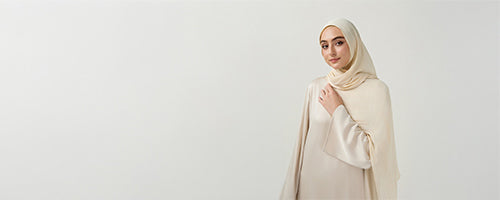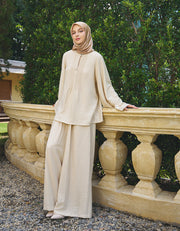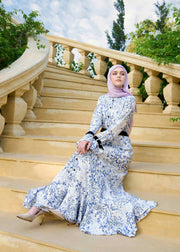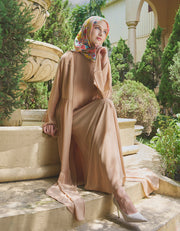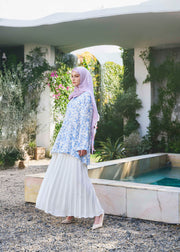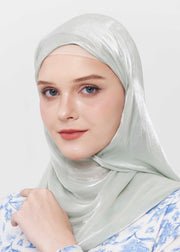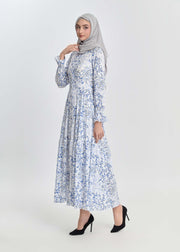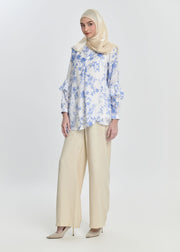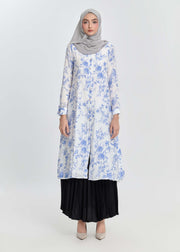Hijab in Islamic Fashion: A Modern Guide for Muslim Women
What Is Hijab in Islamic Fashion?
Hijab in Islamic fashion refers to modest dressing that aligns with Islamic teachings while allowing Muslim women to express their style and identity. The hijab mainly covers the hair, neck, and sometimes shoulders, but it is also a symbol of faith, dignity, and cultural heritage. Over the years, hijab in Islamic fashion has evolved from traditional coverings into a global fashion statement, blending modesty with comfort and elegance.
The Cultural Meaning of Hijab in Islamic Fashion
For many Muslim women, hijab represents more than a fashion accessory. It is a personal choice rooted in religious belief and cultural pride. Hijab in Islamic fashion showcases diversity across different countries and communities. Even with shared values of modesty, styles and interpretations vary widely. This cultural richness is what makes hijab fashion unique and celebrated around the world.
Popular Styles of Hijab in Islamic Fashion
There are several hijab styles that are commonly worn today, each suited to different preferences and occasions:
-
Square Hijab: A traditional style folded into a triangle, commonly seen in Middle Eastern and Southeast Asian regions.
-
Pashmina Hijab: Made with soft, flowing fabric, ideal for both casual outings and formal wear.
-
Shayla Hijab: A long rectangular scarf that allows flexible and easy styling.
-
Turban Hijab: A modern option that wraps around the head and leaves the neck uncovered, favored by younger generations.
-
Khimar: A long cape-like covering providing fuller coverage for Islamic events and prayers.
Each style demonstrates how hijab in Islamic fashion adapts to personal comfort and daily activities.

Popular Styles of Hijab in Islamic Fashion
How to Style Hijab in Islamic Fashion for Different Occasions
Hijab can be styled to suit various lifestyles, from workplace settings to special celebrations:
-
Workwear: Neutral colors like black, beige, or navy match easily with office attire. Fabrics such as chiffon or crepe provide a professional and elegant look.
-
Casual Days: Cotton hijabs are breathable and easy to wear. Pairing with denim jackets, long cardigans, or loose abayas creates relaxed outfits.
-
Formal Events: Silk and satin hijabs add a sophisticated touch. Embellished pins or jeweled headbands enhance the beauty of evening dresses.
The key to styling hijab in Islamic fashion is balancing modesty with harmony in fabrics, color tones, and accessories.

How to Style Hijab in Islamic Fashion for Different Occasions
Choosing the Right Fabric for Hijab in Islamic Fashion
Fabric determines comfort, especially in different climates. Here are the best choices:
-
Cotton: Suitable for hot weather due to its breathable texture.
-
Jersey: Stretchy and durable, perfect for active routines.
-
Chiffon: Lightweight and elegant but may need pins to stay secure.
-
Silk: Premium, glossy fabric ideal for special occasions.
-
Viscose: Soft with easy draping for daily wear.
Choosing the right fabric helps maintain confidence and convenience throughout the day.
Hijab Colors and How They Influence Islamic Fashion
Color choice plays a major role in hijab styling. Light pastel colors give a soft and feminine look, while dark shades offer a more classic and modest appearance. Printed hijabs are also becoming popular, especially when paired with plain outfits to highlight creativity.
Season-based color suggestions:
-
Spring/Summer: Soft pinks, sky blue, vanilla cream
-
Autumn/Winter: Olive green, burgundy, mocha brown
Color harmony elevates the overall outfit and enhances hijab in Islamic fashion to match current trends.
Accessories That Complement Hijab in Islamic Fashion
Small accessories can make a big difference:
-
Hijab pins to secure the scarf
-
Undercaps to keep hair in place
-
Minimal jewelry like earrings or brooches
-
Matching handbags and shoes to complete the look
The goal is to keep the outfit cohesive without drawing too much attention away from the hijab.

Accessories That Complement Hijab in Islamic Fashion
Hijab in Islamic Fashion as a Global Trend
From runway shows to international modest fashion brands, hijab in Islamic fashion is gaining recognition worldwide. Fashion designers collaborate with Muslim influencers to create collections that respect modesty while delivering modern style. This growing visibility empowers Muslim women to celebrate their identity confidently.
Final Thoughts
Hijab in Islamic fashion continues to evolve with creativity and innovation. Whether a woman chooses traditional styles or modern designs, the hijab remains a meaningful expression of faith and individuality. With the right fabrics, colors, and accessories, every Muslim woman can find her unique way to embrace hijab confidently in everyday life.

